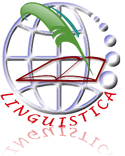PROCESS OF A SCHIZOPHRENIC™S DIALOGUES IN A BEAUTIFUL MIND MOVIE
DOI:
https://doi.org/10.24114/jalu.v2i1.716Abstract
ABSTRACT This study is concerned to transitivity system, focusing in the types of process which were uttered by the schizophrenic in A Beautiful Mind movie, John Nash. This study was conducted by using descriptive qualitative method. There were six types of process in transitivity system. The results of data analysis showed the total numbers were: material process 44.67%, mental process 18.83%, relational process 28.03%, behavioral process 1.17%, verbal process 4.53% and existential process 2.77%. The most dominant process is material process, that is the process which indicates action; activities and events, things happen and people or other actors do things or make them happen. It occurred because many statements showed Nash™s activities with real people and hallucination people especially when Nash™s hallucination friends about Charles, Parcher and Marcee were kept in his mind and he talked much with them about their activities because he met his hallucination friends intensively. Keywords: schizophrenia, transitivity, process, movieDownloads
Issue
Section
Articles
License
Copyright (c) 1970 Siska Pratiwi, Rahmah Rahmah

This work is licensed under a Creative Commons Attribution-ShareAlike 4.0 International License.
Authors who publish with this journal agree to the following terms:
- Authors retain copyright and grant the journal the right of first publication with the work simultaneously licensed under a Creative Commons Attribution License that allows others to share the work with an acknowledgment of the work's authorship and initial publication in this journal.
- Authors are able to enter into separate, additional contractual arrangements for the non-exclusive distribution of the journal's published version of the work (e.g., post it to an institutional repository or publish it in a book), with an acknowledgment of its initial publication in this journal.
- Authors are permitted and encouraged to post their work online (e.g., in institutional repositories or on their website) prior to and during the submission process, as it can lead to productive exchanges, as well as earlier and greater citation of published work (See The Effect of Open Access).
- This work is licensed under a Creative Commons Attribution-ShareAlike 4.0 International License.

